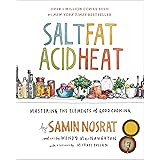The contemporary culinary landscape frequently presents a significant challenge: how to reconcile the desire for deeply satisfying flavors with stringent nutritional requirements. Many individuals grapple with the perception that healthful eating necessitates a compromise on taste or intricate preparation, particularly when adhering to specific dietary philosophies. However, innovative approaches exist that skillfully merge gourmet appeal with robust wellness benefits, and the demonstration above regarding the creation of delectable alkaline tacos serves as an exemplary case in point.
This culinary endeavor showcases a sophisticated method for crafting nutrient-dense meals that actively support the body’s pH balance without sacrificing rich palatability. Adopting such an informed strategy ensures that gastronomic pleasure is harmoniously aligned with physiological well-being. By integrating expert insights into ingredient selection and preparation techniques, the creation of dishes like these becomes a powerful solution to common dietary dilemmas.
1. The Foundational Principles of Alkaline Nutrition for Optimal Health
The concept of an alkaline diet, which emphasizes foods believed to produce a less acidic metabolic ash, has garnered considerable attention within the nutritional science community. This dietary paradigm suggests that maintaining a slightly alkaline bodily pH, particularly within the blood and cellular environments, is crucial for mitigating systemic inflammation and promoting overall cellular integrity. Research indicates that chronic low-grade acidosis, often influenced by dietary choices, may contribute to various health concerns, including diminished bone density and compromised immune function.
A diet heavily weighted towards alkaline-forming foods, often representing 70-80% of daily intake, is typically characterized by a high consumption of fresh vegetables, fruits, nuts, and specific whole grains. Conversely, highly processed foods, red meats, and refined sugars are generally categorized as acid-forming, necessitating a mindful reduction. The systematic incorporation of ingredients shown in the accompanying video directly aligns with these established alkaline principles, providing a clear pathway towards improved physiological balance and vitality.
Understanding pH Homeostasis and Dietary Impact
The human body possesses complex regulatory systems designed to maintain a stable pH within a very narrow range, typically between 7.35 and 7.45 in the blood. While dietary interventions do not drastically alter systemic blood pH, they are understood to influence the metabolic byproducts, or “ash,” left after food digestion. Foods with a high mineral content, such as potassium, magnesium, and calcium, are often considered alkaline-forming due to their buffering capacity against acidic compounds produced during metabolism.
Conversely, foods rich in sulfur, phosphorus, and chlorine, commonly found in protein-heavy animal products and processed items, tend to contribute to an acidic load. Strategic dietary planning, therefore, involves prioritizing ingredients that aid in maintaining this delicate internal equilibrium. The selection of ingredients for these delightful alkaline tacos specifically targets this beneficial physiological outcome, reflecting an informed choice for sustained wellness.
2. Deconstructing the Nutrient Profile of Alkaline-Forming Ingredients
The selection of ingredients for the showcased alkaline tacos is far from arbitrary; each component contributes significantly to the dish’s nutritional value and alkaline potential. A detailed examination of these plant-based elements reveals their individual and synergistic benefits, underscoring the thoughtfulness behind their inclusion. Understanding these profiles enhances appreciation for the meal’s comprehensive health advantages.
Optimizing Phytochemical and Mineral Intake
Shallots, for instance, are rich in powerful organosulfur compounds and flavonoids, which have been studied for their antioxidant and anti-inflammatory properties, providing a robust base for metabolic support. Zucchini, often lauded for its high water content, also delivers essential electrolytes and trace minerals, crucial for cellular hydration and function. Its mild flavor profile makes it an excellent vehicle for other nutrient-dense components.
Mustard greens, a member of the cruciferous family, are exceptionally high in vitamins K, A, and C, alongside glucosinolates, which are recognized for their role in detoxification pathways. Bell peppers contribute a substantial dose of vitamin C and various carotenoids, both potent antioxidants that support immune health and cellular protection. Roma tomatoes, with their vibrant red hue, signify a high concentration of lycopene, a carotenoid linked to cardiovascular benefits and often considered moderately alkaline upon digestion.
Mushrooms, frequently overlooked, offer a unique array of B vitamins, selenium, and immunomodulatory compounds, firmly positioning them as an alkaline-forming powerhouse. Quinoa, celebrated as a complete protein, provides all nine essential amino acids, alongside fiber, magnesium, and iron, making it an ideal whole-grain component for sustained energy and satiety. The use of a homemade spelt tortilla introduces an ancient grain with a distinct nutritional profile, often noted for its lower glycemic index and superior digestibility compared to conventional wheat varieties.
3. Advanced Culinary Techniques for Enhanced Nutritional Bioavailability
Beyond ingredient selection, the methods of preparation play a critical role in maximizing the nutritional impact and sensory appeal of any dish, especially with alkaline tacos. The act of roasting vegetables, as demonstrated, transcends mere cooking; it is a strategic technique that amplifies natural flavors and often improves nutrient bioavailability. This process fosters a deeper understanding of food science in culinary practice.
The Science of Roasting and Flavor Development
Roasting vegetables at optimal temperatures facilitates the Maillard reaction, a complex chemical process that creates rich, savory flavors and desirable textures through the caramelization of natural sugars and amino acid interactions. For ingredients like shallots, zucchini, bell peppers, and mushrooms, this transformation enhances their inherent sweetness and umami, making them significantly more palatable and enjoyable. Furthermore, controlled roasting can help preserve heat-sensitive vitamins, while also breaking down tough fibers, which can improve digestibility and nutrient absorption.
The “seasoned well” directive in the video underscores the importance of intelligent spice blending. Beyond enhancing taste, many herbs and spices possess significant therapeutic properties. For example, turmeric offers potent anti-inflammatory curcuminoids, while cumin and oregano contribute antioxidants and digestive aids. Integrating these into the cooking process not only elevates the flavor profile but also imbues the dish with additional health-promoting compounds, aligning perfectly with the principles of functional gastronomy.
Crafting Custom Tortillas for Superior Nutrition
The decision to utilize homemade spelt tortillas is another testament to a meticulous approach to ingredient control and nutritional superiority. Spelt, an ancient grain, typically boasts a broader spectrum of nutrients than modern wheat, including higher levels of fiber, protein, and B vitamins. Creating tortillas from scratch allows for the complete avoidance of industrial additives, preservatives, and unhealthy fats often found in commercially produced alternatives.
This bespoke approach ensures that every component of the alkaline tacos adheres to the highest standards of purity and nutritional value. The texture and flavor of a freshly made spelt tortilla also provide a superior culinary experience, contributing significantly to the overall enjoyment and satisfaction derived from the meal. This dedication to craft underscores a commitment to both health and gastronomic excellence.
4. Integrating Alkaline Principles into Holistic Culinary Practice
Embracing the philosophy behind these alkaline tacos extends far beyond a single recipe; it represents a foundational shift towards a more balanced and health-conscious approach to daily meal preparation. The lessons learned from selecting alkaline-forming ingredients and employing nutrient-preserving cooking techniques can be readily applied across a wide spectrum of culinary endeavors. This broader perspective fosters a sustainable path to wellness.
Instead of viewing the alkaline diet as a rigid set of restrictions, it is more effectively approached as a guiding principle for mindful eating, emphasizing balance and conscious selection. By consistently prioritizing fresh, whole, unprocessed foods and diversifying intake of vegetables, fruits, and quality grains, individuals can significantly enhance their dietary alkalinity. This proactive stance supports the body’s natural homeostatic mechanisms and contributes to long-term vitality.
Consider expanding your repertoire by exploring other alkaline-friendly ingredients such as leafy greens like spinach and kale, various berries, almonds, and avocados. Experiment with different cooking methods, like steaming or light sautéing, to further diversify nutrient retention and flavor profiles. The objective is to foster a dynamic and enjoyable relationship with food, where every meal, especially delicious alkaline tacos, becomes an opportunity to nourish and invigorate the body while delighting the palate.











